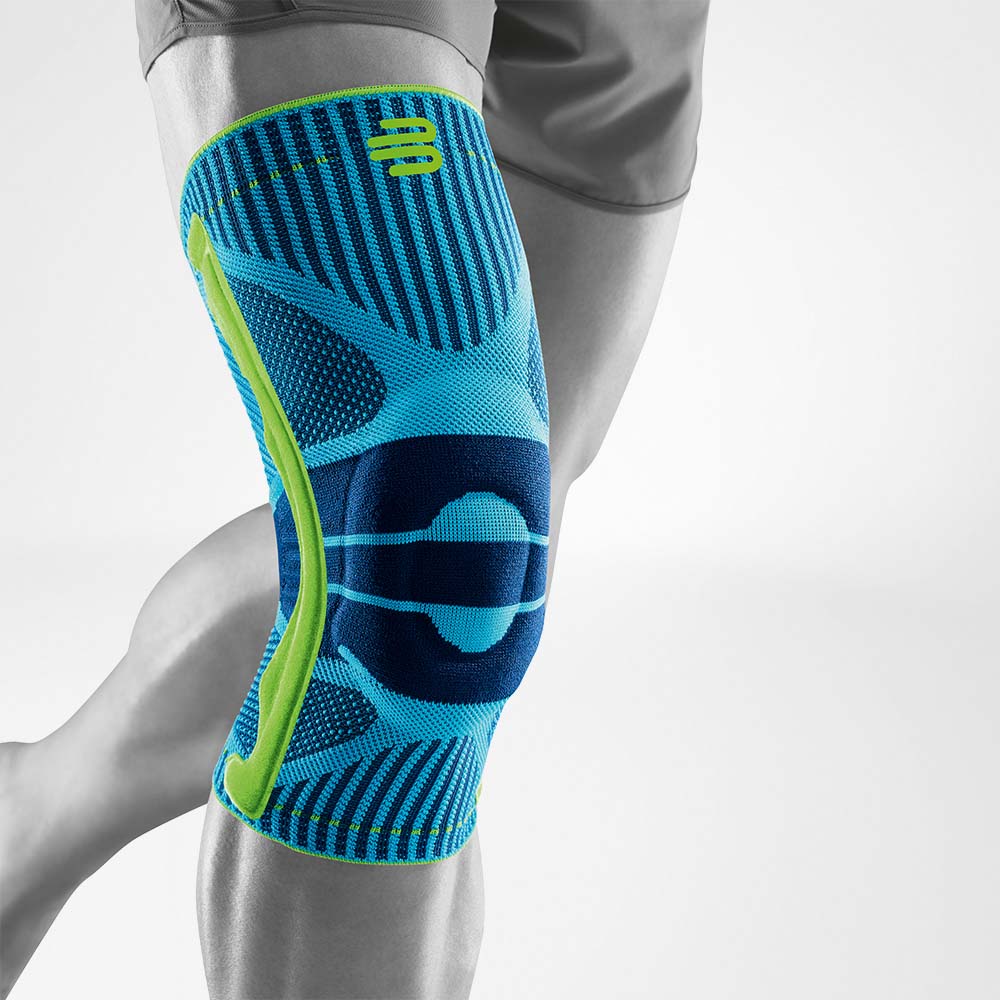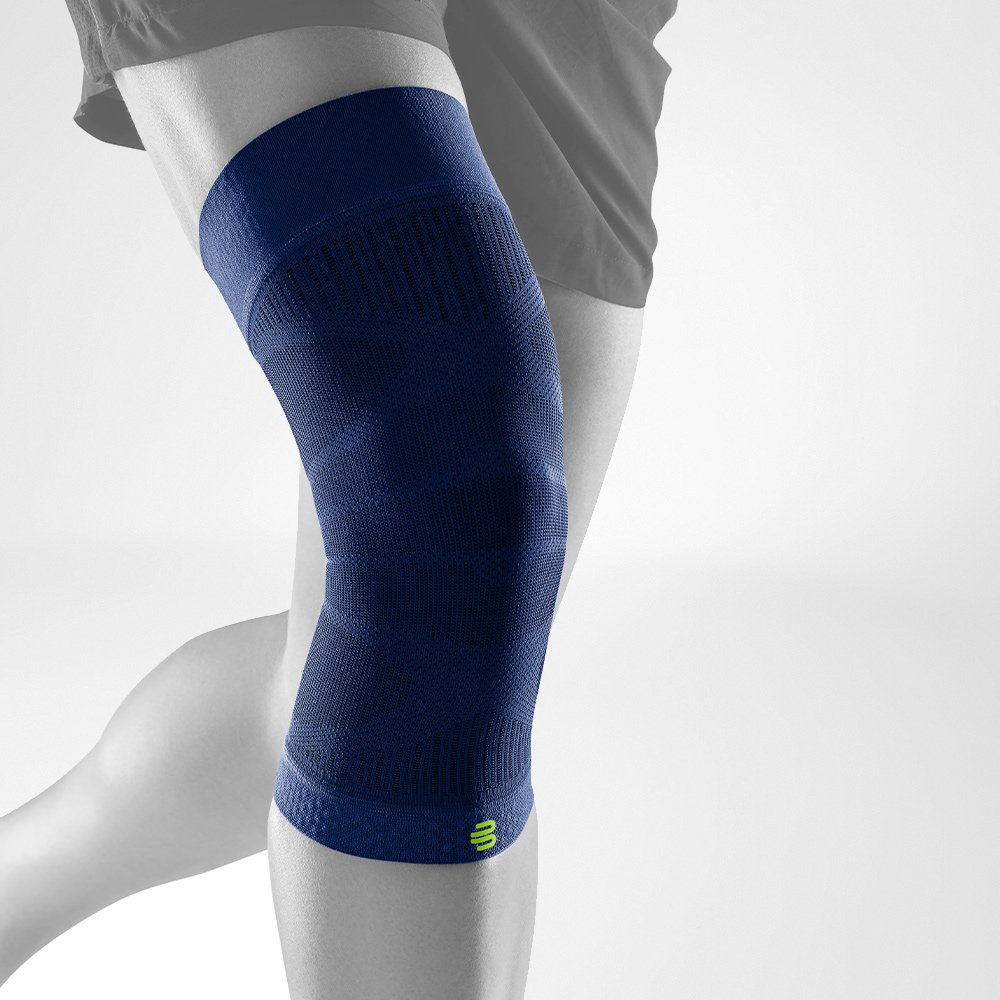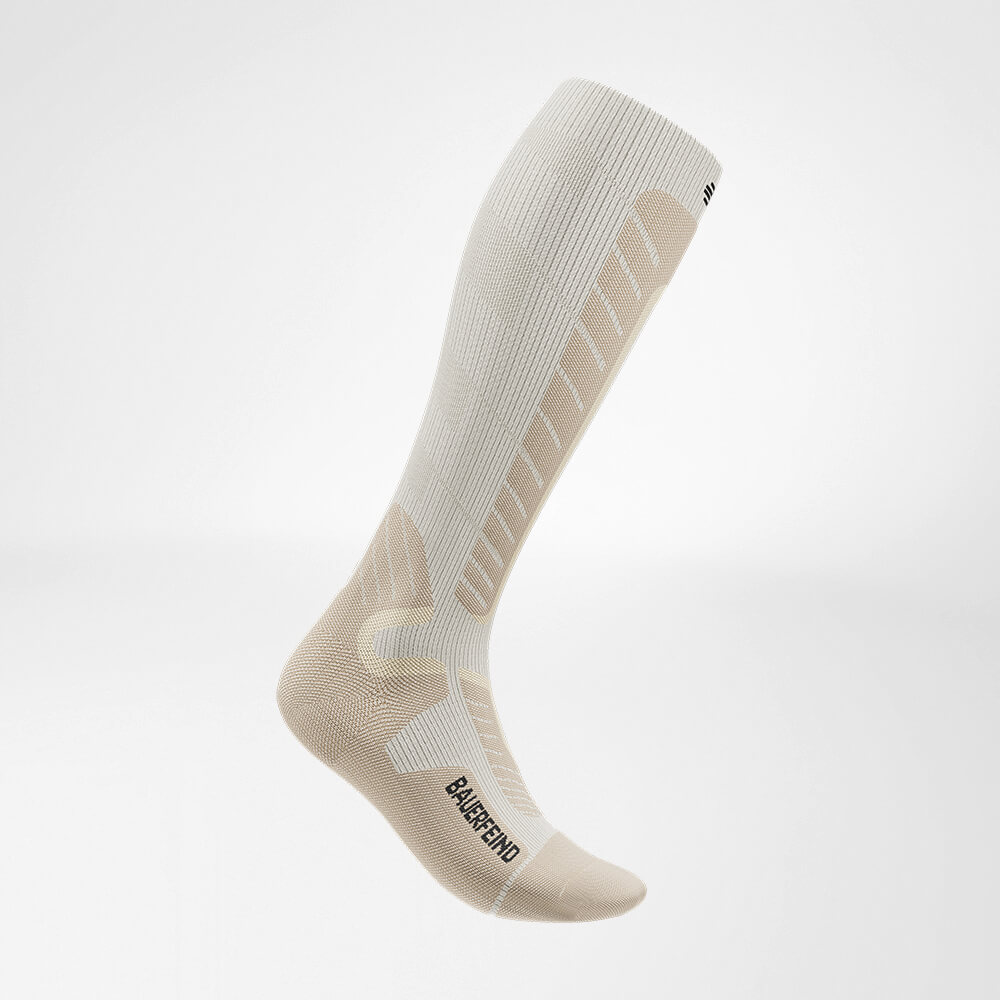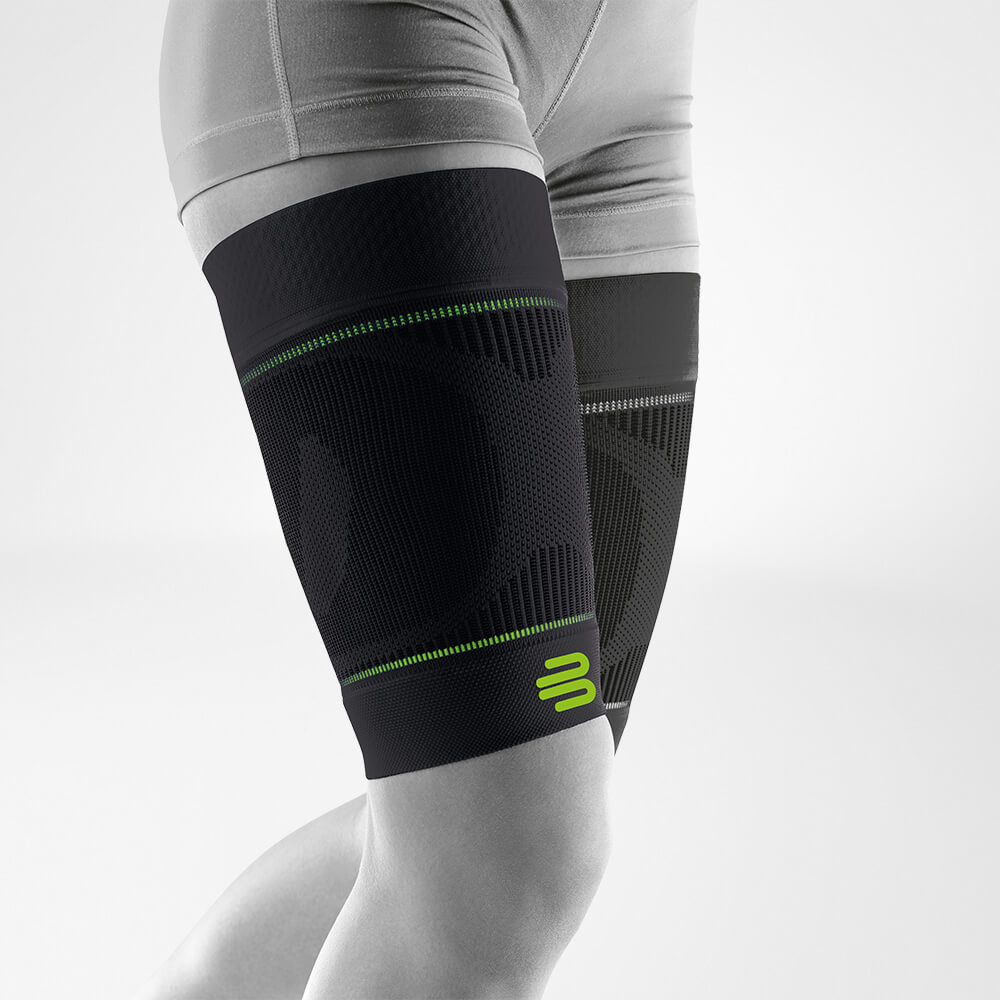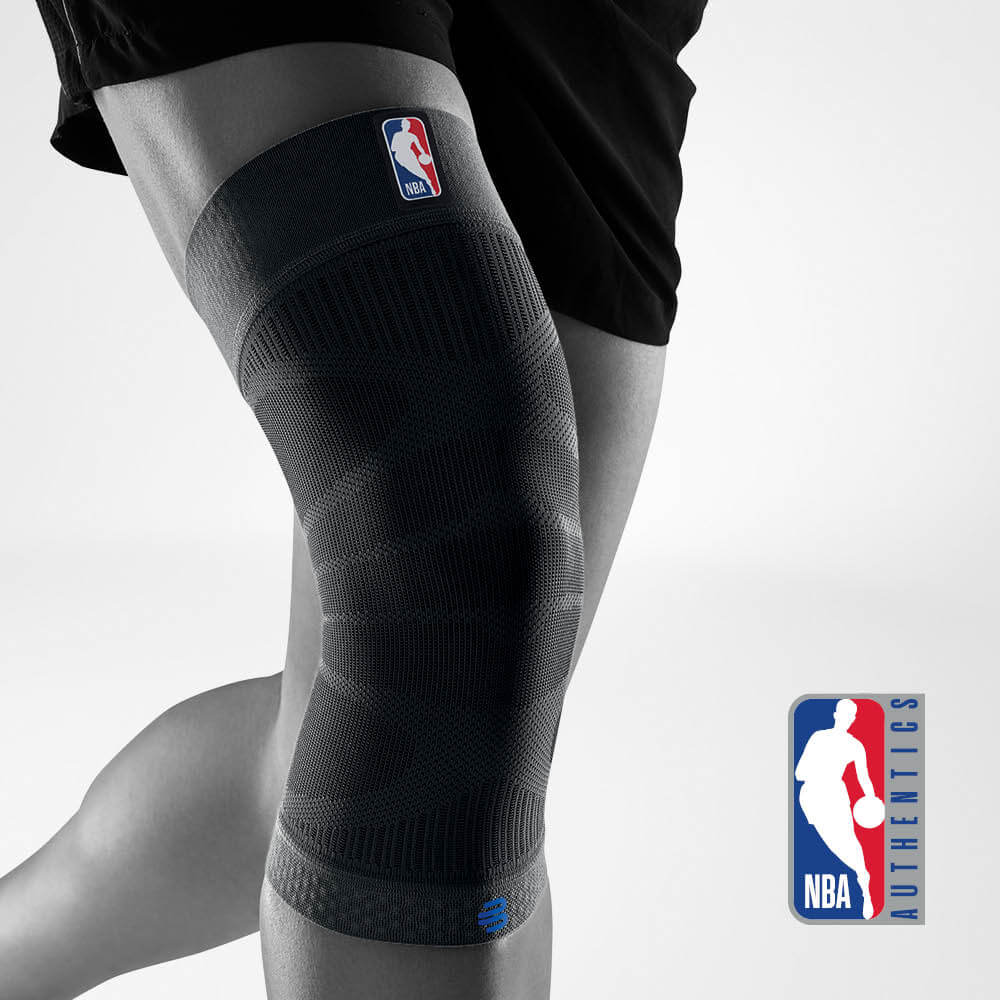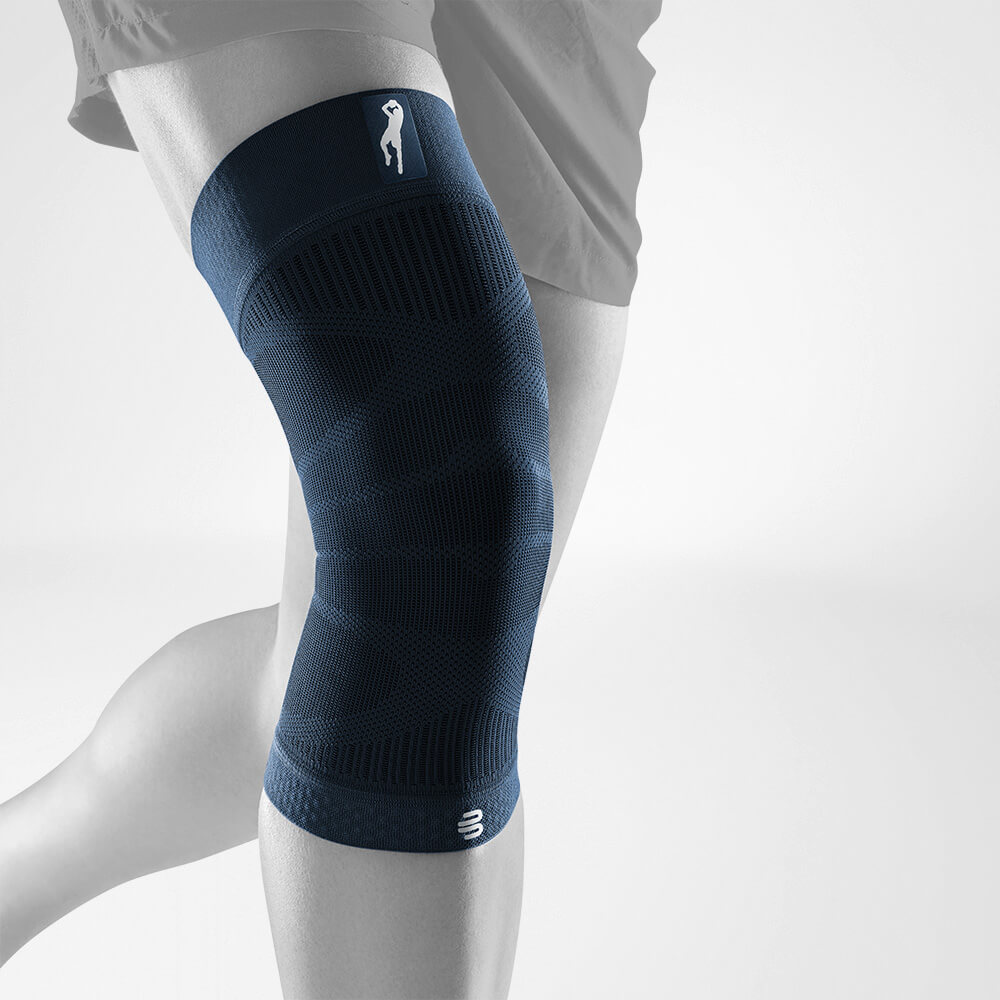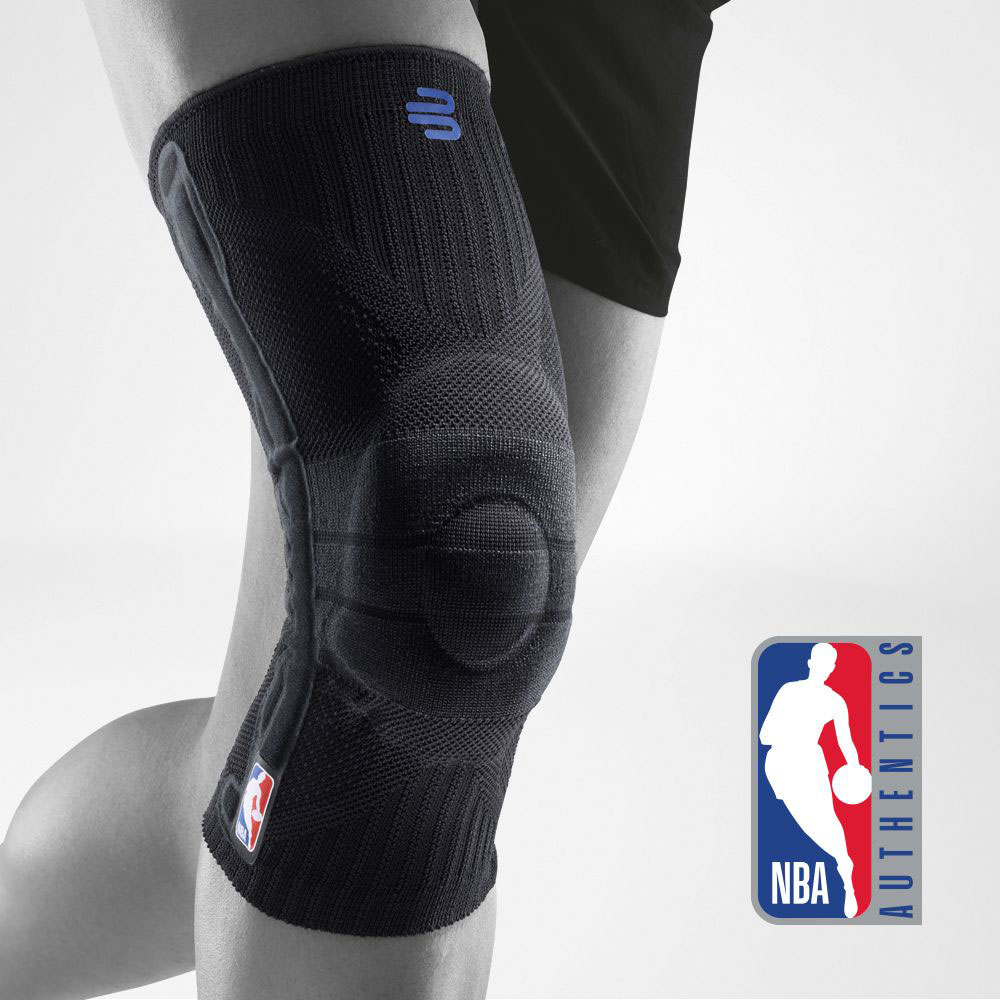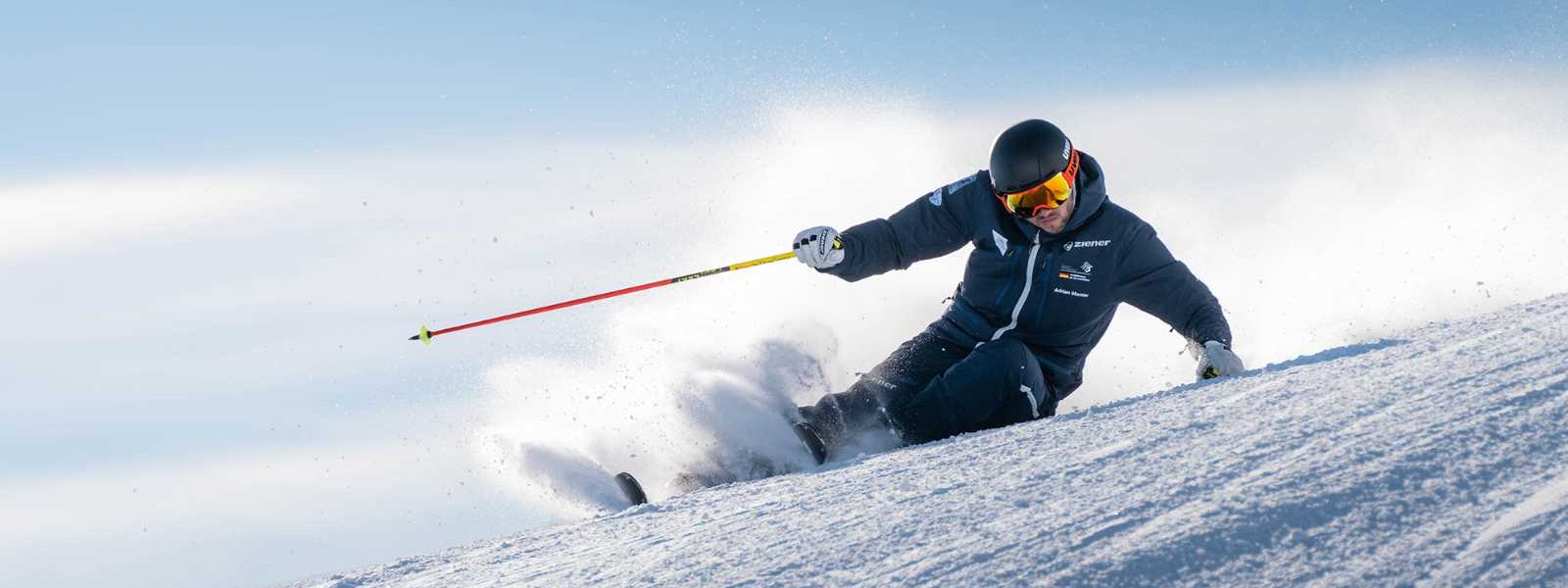
Winter Sports
Knie pain after skiing
What's behind it, what you can do
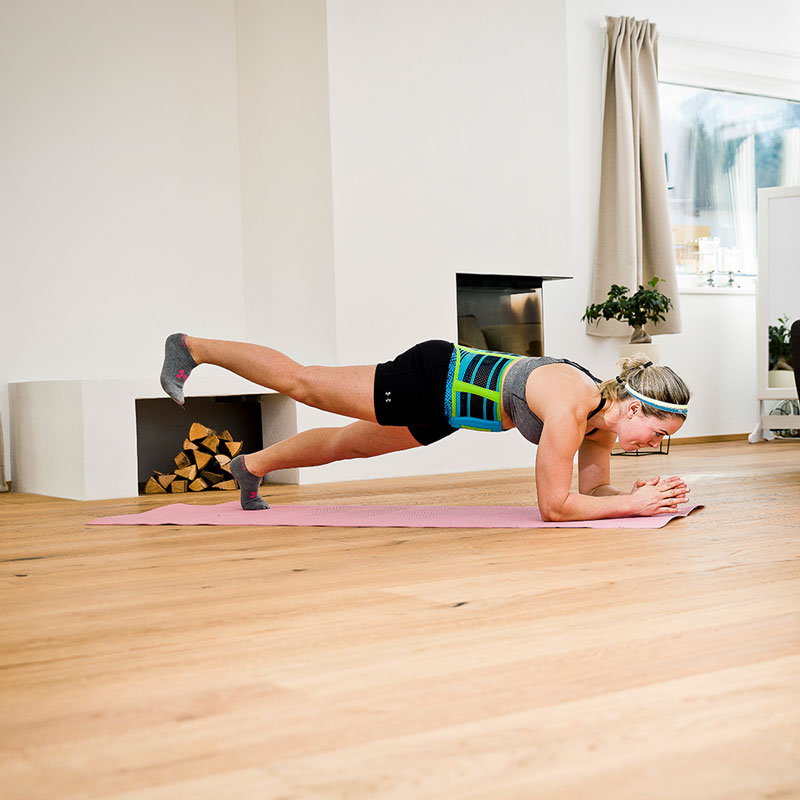
Insufficiently trained or overload muscles
Beginners on the slopes know it all too well: burning calves and thighs on long descents. This is nothing unusual in itself, but should serve as a clear warning signal: Your muscles are at their limit.
If you consider that well-trained muscles are essential for effectively supporting the joints with cartilage, ligaments and tendons, it must be assumed that this support function will soon no longer be available if the muscles are burning and there is a injury risk. In this case, it's better to slow down, take a break and continue the descent later if necessary.
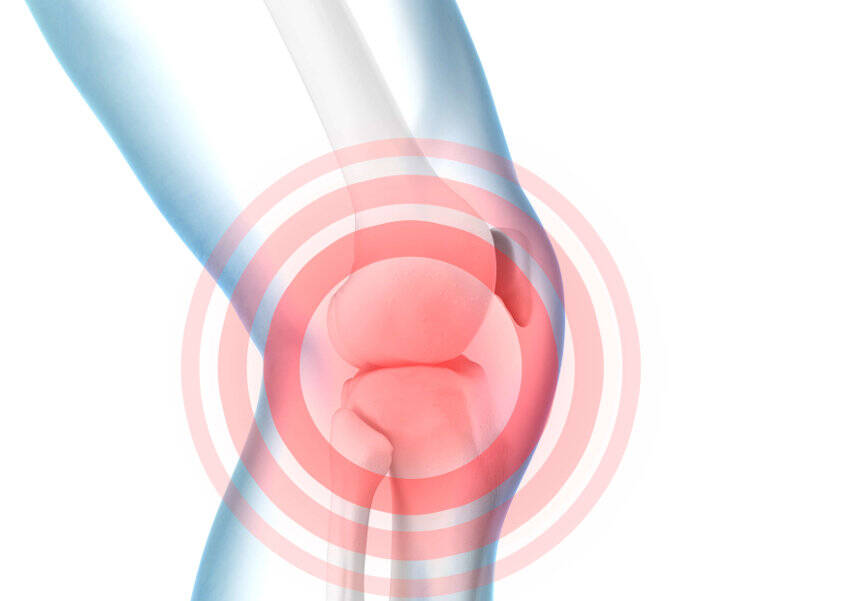
An injury
Pain is always an alarm signal that your body is trying to make itself known. If you have knee pain when skiing, you should consult a doctor to find out where it's coming from.
If, for example, you do sports that put a lot of strain on your joints, such as skiing or snowboarding, with an already damaged joint cartilage such as the meniscus, this can lead to serious long-term damage.
You should therefore avoid sport at least until your doctor gives you the green light.
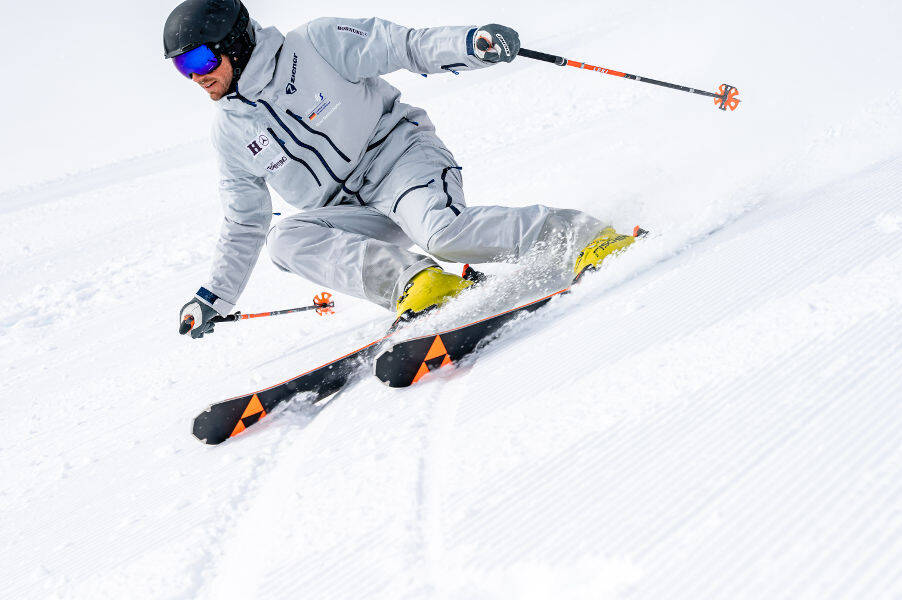
Skiing after a cruciate ligament rupture
A cruciate ligament rupture is certainly one of the most serious joint injuries and it takes a certain amount of time to be able to do sport again afterwards. The anterior cruciate ligament tears when the knee joint is bent, spread apart and rotated outwards, but the foot and lower leg are fixed and don't rotate with it. Tears of the anterior cruciate ligament occur relatively frequently in skiing compared to other sports, as enormous lateral tensile forces are exerted during downhill and slalom skiing.
If, unfortunately, one of your cruciate ligaments has been damaged in a fall, you'll have to be prepared for a longer sport break. Six months without intensive sport is usually enough, but depending on the severity and healing process, a return to skiing, snowboarding or contact sports can take a few months longer than that.
Skiing after a meniscus tear
Damage to the meniscus due to injury or wear and tear is not uncommon, especially in skiing. The meniscus is a crescent-shaped, cartilaginous disc in the knee that is almost notorious for ending entire careers, especially among competitive athletes.
A meniscus tear is typically characterised by pain, which is particularly noticeable when the knee is turned inwards. It is a pressure pain that can feel blocking and stabbing. Meniscus tears are usually operated. It can then take several months before a return to sports activity is really recommended.
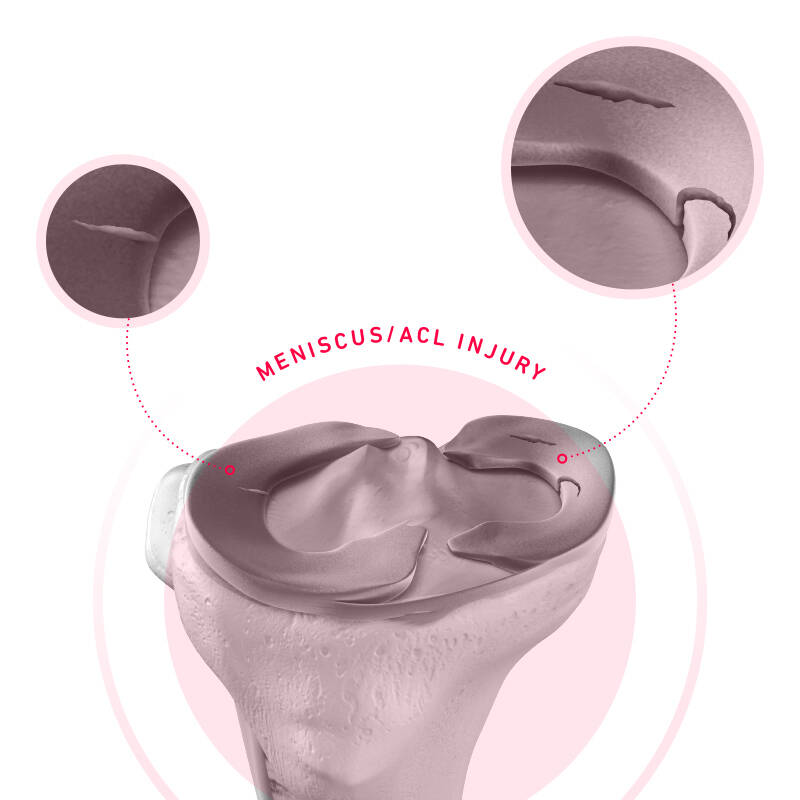
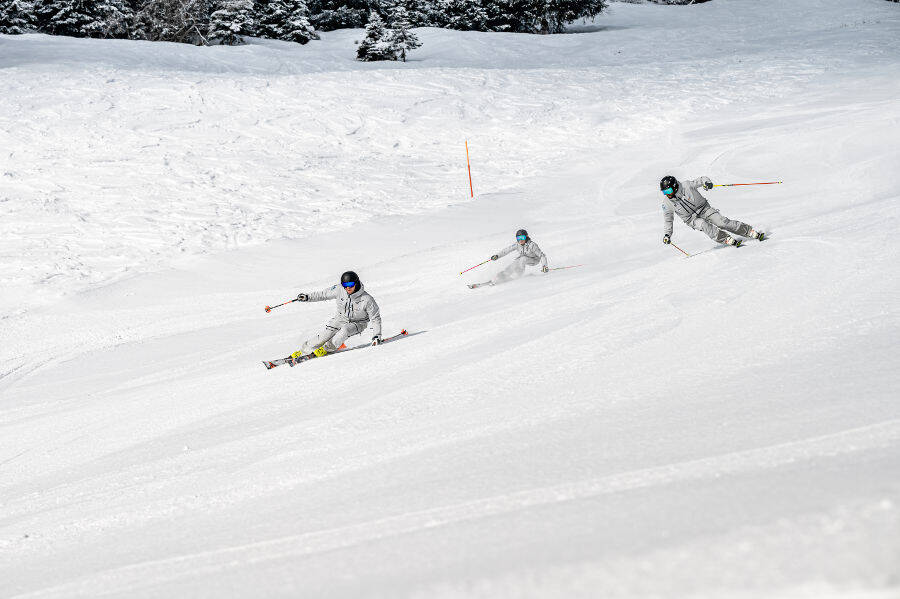
Unhappy Triad
The so-called "unhappy triad" is a combination of an injury to the medial collateral ligament, the medial meniscus and the cruciate ligament. Its name says it all: after all, such a complex and serious injury means a break of at least eight months, depending on how your therapy goes and whether there are additional bone injuries, e.g. to the kneecap. Surgery is usually unavoidable to prevent knee osteoarthritis.
Unhappy triad occurs relatively frequently in skiing and snowboarding compared to other sports due to the lateral tensile forces described above. We will give you some tips on how to avoid triad below.
Knee cooling / Knee warming
A classic pain treatment: Apply ice or a cold pack to the painful area (never directly to the skin, of course, but wrapped in a towel, for example). Cooling is particularly recommended to prevent or reduce swelling of the tissue, as the cold causes the blood vessels to contract and the blood flow in the affected area decreases.
However, heat, e.g. by applying a heat plaster or a heat compress, can also help to reduce knee pain. Basically, heat promotes blood circulation and metabolism, while cold slows down these processes. Depending on the cause of the pain, both can help you.
A simple rule of thumb can help you decide whether to use heat or cold: you should cool down acute injuries, e.g. torn ligaments, and heat up tense muscles and stiff joints as well as all chronic conditions.
The right equipment - a knee support for skiing
Regardless of whether you want to avoid pain or slowly get back into skiing after an injury: a knee support for skiing such as our Bauerfeind Sports Knee Support is always a good idea and should be part of every set of skiing equipment.
Here you can find out exactly how it helps you against knee pain when skiing.
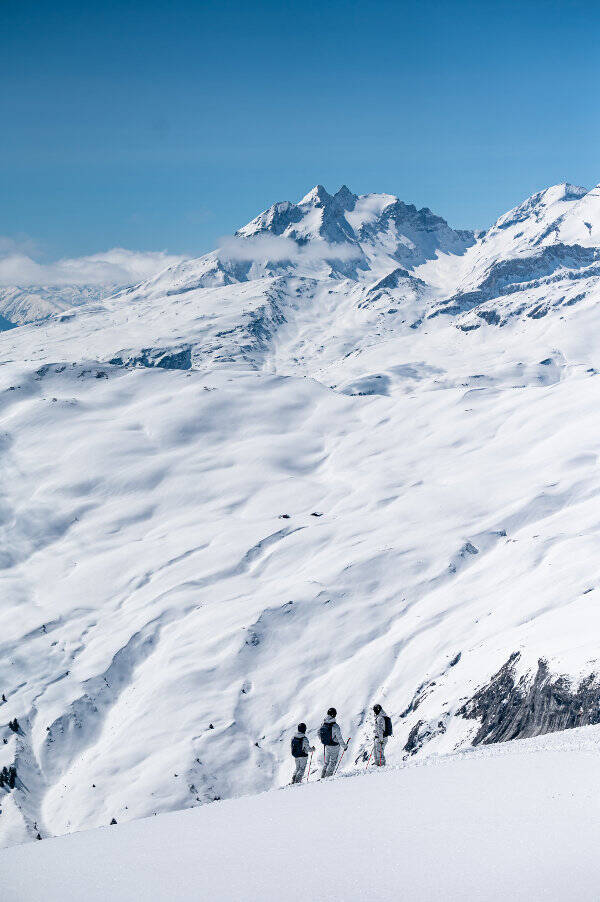
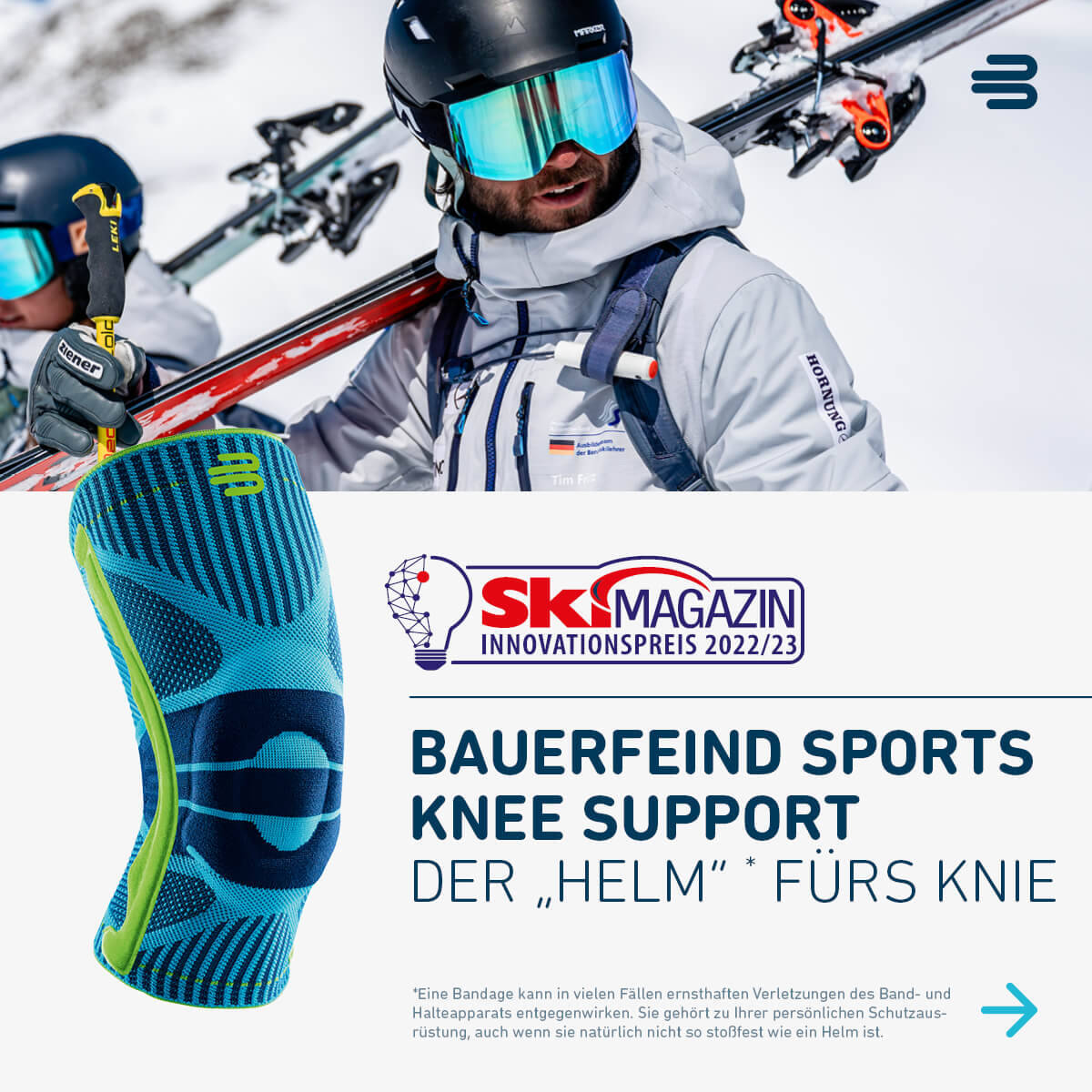
Excellent against knee pain
It is no longer a secret that our Sports Knee Support has special qualities in the fight against knee pain while skiing. The readers of SkiMAGAZIN have just awarded our knee support the 2023 Innovation Prize in the "Accessories" category. Take advantage of its innovative functionality and get it now in your favourite colour.
Best tips to avoid knee pain when skiing
1. Strength training: As already mentioned, the strain on your joints when skiing is enormous. A strong supporting structure is important so that ligaments and tendons can withstand this strain. So: off to the gym!
2. Warm up: Several kilometers of downhill skiing at a spectacular pace: it's clear that your muscles shouldn't go onto the slopes completely unprepared. Make sure you warm up sufficiently beforehand, e.g. by stretching or doing our ski gymnastics exercises.
3. Adapt your skiing style: Even if the temptation is sometimes quite great, especially on a freshly groomed slope: be aware that you are not a World Cup pro and adapt your skiing style to your ability. It is not surprising that most ski injuries due to falls happen because people overestimate their own abilities.
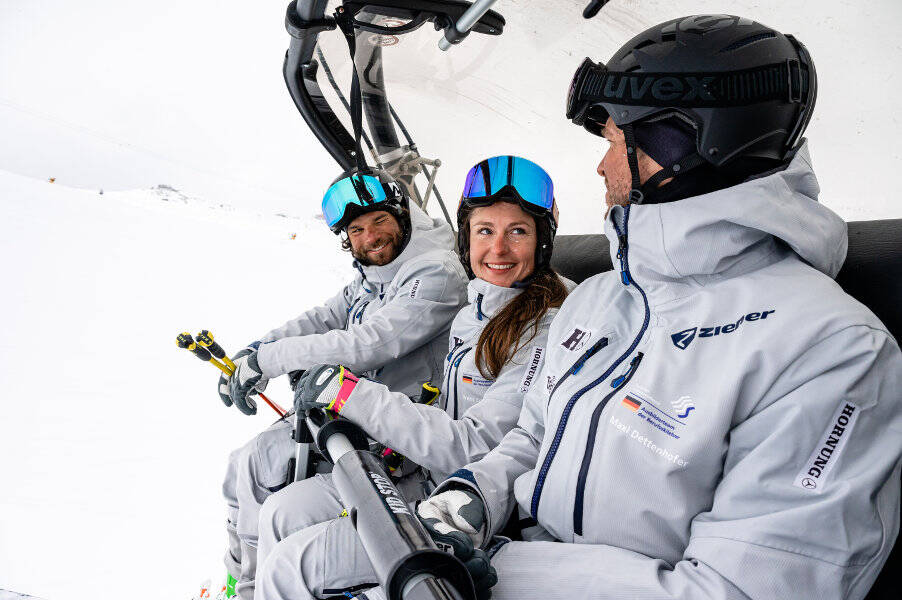
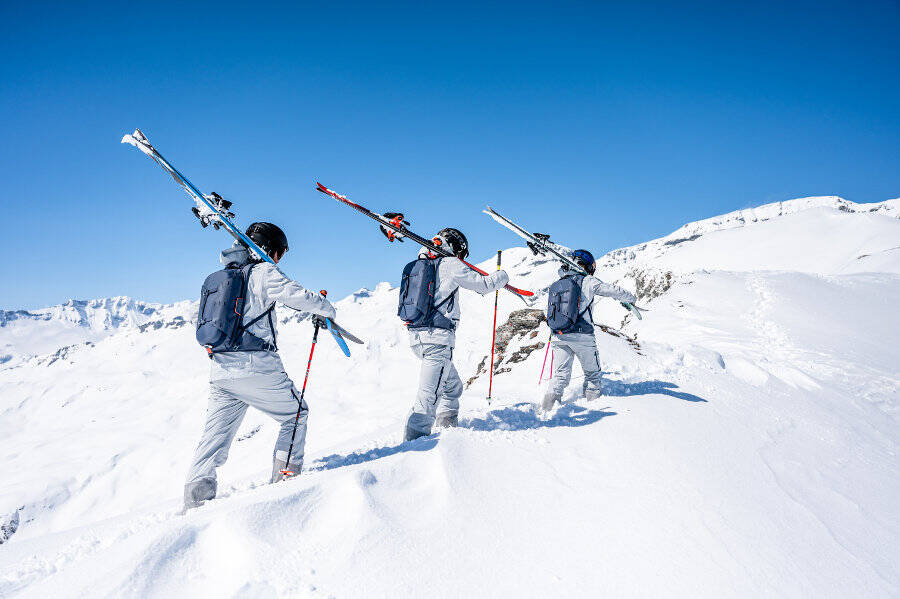
4. Check the equipment: Is the binding adjusted correctly? Does the helmet fit? Are the ski boots completely closed? When skiing and snowboarding, especially on steep descents, you are hugely dependent on your equipment working properly at the crucial moment. So take an extra minute to check your equipment.
5. Choose the right skis: Even though professionals often ski with particularly long poles that are significantly taller than their body size, shorter skis are recommended for beginners in particular, as they have less turning resistance, so turns tend to be easier.
6. Consider the FIS rules: The International Ski Federation (FIS) has drawn up rules of conduct for skiers that apply to all slopes worldwide for a reason. You can read them - with humorous illustrations - from our sports partner, the German Ski Instructors' Association, among others.
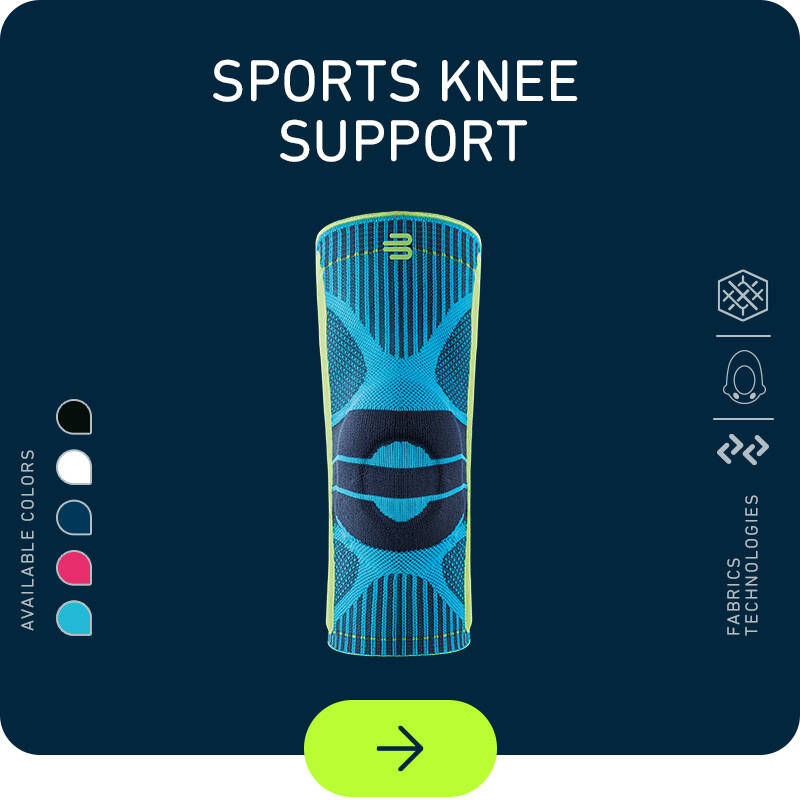
7. Visit a ski school: Practically every winter sports career once started small - on flat beginners' slopes and with expert instruction from a ski instructor. This will help you learn a good basic technique and become much more confident on your skis.
8. take breaks: Even if it doesn't seem like it at first, skiing and snowboarding are really exhausting for the body. At the latest when your thighs are burning, you should take a short break and wind down. Regular breaks significantly reduce the risk of falling.
Our slope star against knee pain against knee pain when skiing: The Sports Knee Support
Avoiding pain is particularly easy with targeted support exactly where it matters. Our Sports Knee Support supports your knee joint efficiently thanks to the compression knit and the Omega pad and triggers sensorimotor feedback to use your knee correctly and avoid pain or injuries.

